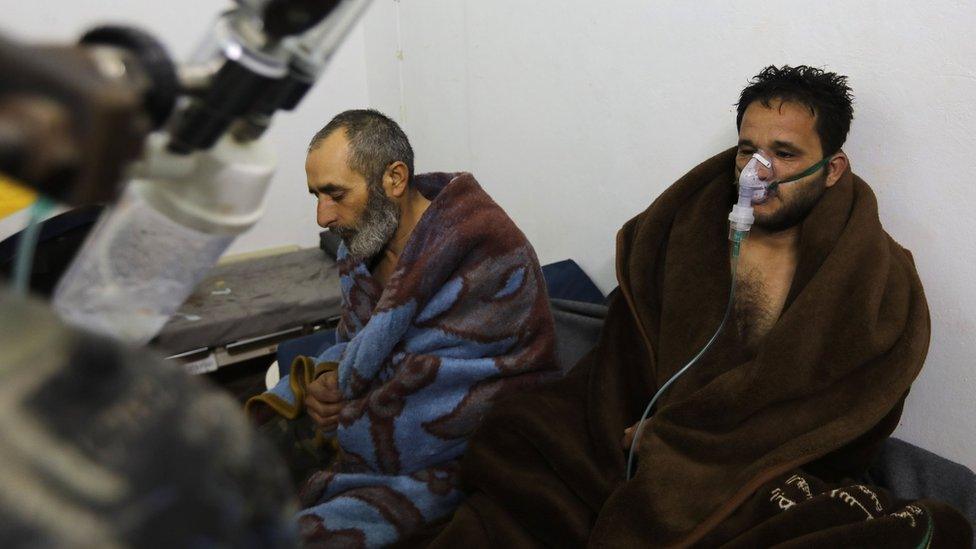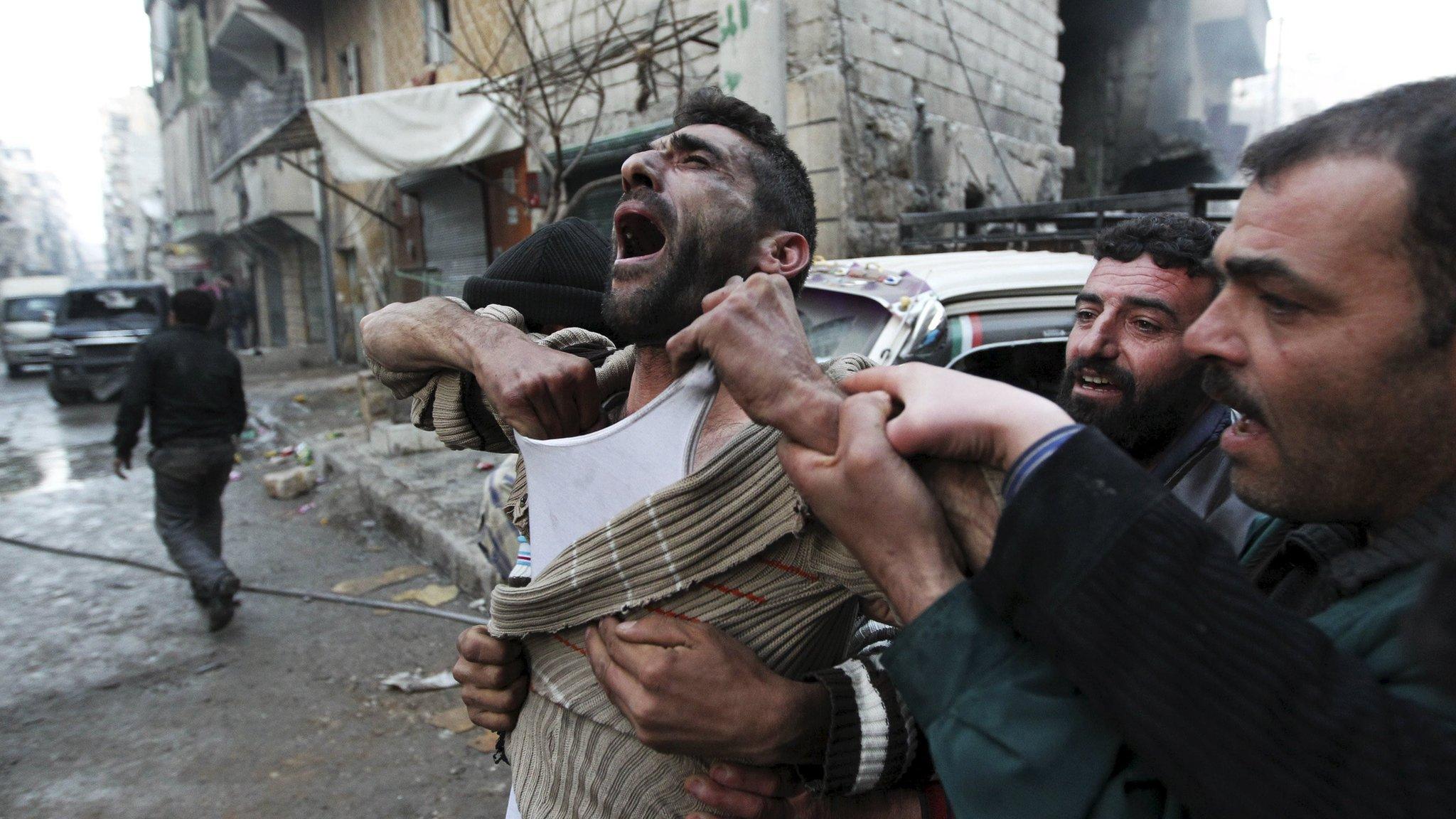Syria war: OPCW says chlorine used in February attack
- Published

People bought to hospitals after February's attack in Saraqeb suffered breathing problems
The global chemical weapons watchdog has said chlorine is likely to have been used in an attack on a rebel-held town in northern Syria in February.
The Organisation for the Prohibition of Chemical Weapons (OPCW) found chlorine had been "released from cylinders by mechanical impact" in Saraqeb.
It did not assign blame for the incident, in line with its mandate.
Medics and activists said at the time that chlorine-filled bombs had been dropped by a government helicopter.
The Syrian government has repeatedly denied ever using chemical weapons.
However, a joint UN-OPCW mission that has now ended said it was confident that government forces had used the nerve agent Sarin and chlorine in four attacks.
The OPCW is also currently investigating a suspected chemical attack last month in the then rebel-held town of Douma, in which medics say 40 people were killed.
The US, UK and France said they were confident that chemical weapons had been used in Douma by government forces and in response carried out missile strikes on Syria's "chemical weapons infrastructure".
In a separate development on Wednesday, the government was reported to have regained control of the centre of the country after the last buses evacuating rebels and their families left a besieged region straddling Homs and Hama provinces.
What happened in Saraqeb?
The attack on the town in Idlib province took place on 4 February.
Allow X content?
This article contains content provided by X. We ask for your permission before anything is loaded, as they may be using cookies and other technologies. You may want to read X’s cookie policy, external and privacy policy, external before accepting. To view this content choose ‘accept and continue’.
People brought to local hospitals after the attack smelt of chlorine, the doctor said, and suffered breathing problems and irritation in their eyes.
The Syria Civil Defence, whose rescue workers are commonly known as the White Helmets, said nine people had been affected and it posted a video online of several men being sprayed with water as they struggle to breathe.

On Wednesday, the OPCW announced that its Fact-Finding Mission had confirmed chlorine was "likely used as a weapon" in the incident.
It said the conclusions were based on
The presence of two cylinders determined to have contained chlorine
Witness testimony
Environmental samples confirming "the unusual presence of chlorine"
The number of patients who showed signs and symptoms consistent with exposure to chlorine
"I strongly condemn the continued use of toxic chemicals as weapons by anyone, for any reason, and in any circumstances," said OPCW Director General Ahmet Uzumcu. "Such acts contradict the unequivocal prohibition against chemical weapons enshrined in the Chemical Weapons Convention."
It is not clear if it will ever be established who was behind the attack because the joint UN-OPCW mission was dissolved last November after Russia vetoed a US-sponsored Security Council resolution that would have extended its mandate, and the US vetoed a Russia-sponsored resolution that would have limited its scope.
How has the situation in central Syria changed?
Troops raised the Syrian flag in the centre of Rastan as the convoys left.
The Syrian Observatory for Human Rights, a UK-based monitoring group, said a total of 34,500 people had been transported to Idlib province since the evacuations from the Rastan, Talbiseh and Houla areas began earlier this month.

Troops entered the central town of Rastan on Wednesday after rebels were evacuated
Government officials said on Wednesday that the main north-south motorway highway between the capital Damascus and Hama would be opening again soon.
Rebel factions still control large parts of north-western and south-western Syria, while a Kurdish-led alliance backed by the US holds most of the north-east.
- Published5 February 2018

- Published2 May 2023
